Thinker’s Wearable Fidgets
(2018)

As information has become more accessible,
people rely more on searching for information than thinking on
their own. Engulfed in an addiction to superficially novel materials, the
solitary moments of contemplation erode day by day. At the end of this journey
lies the potential demise of human creative thinking abilities, leaving behind
a profound ocean filled with endless question marks.

“Digital addiction kills inner creativity.”
If the brain continuously receives
information, stress can accumulate, leading to physical issues due to the
burden on the brain. During daydreaming or idle contemplation, the brain
activates a specific region known as the 'Default Mode Network (DMN)'.
During this time, the brain undergoes a reset, allowing for more efficient
functioning afterward. This idle state allows the brain to organize the
acquired information, creating an environment conducive to engaging in new
activities.
(She is the winner of zoning out contest in Korea.)
![]()
Zoning out: 멍~
Q: How can we fall into the state of resting wakefulness?
Even when we are daydreaming, we are not
entirely still. Unlike vacant eyes with no movement, our hands and feet are
quietly but intensely engaged, delving into deep default mode. Some
people often underestimate actions such as spinning a pen, tapping feet,
sweeping hair aside, or habitually fidgeting with the drawstring on a hoodie,
considering them meaningless patterns. However, by blocking out unnecessary
stimuli and consistently repeating the most comfortable stimuli, we can deepen
and prolong the state of resting wakefulness, allowing our brains to relax.
Contrary to popular belief, unconscious,
repetitive behavioral patterns are commonly observed not only during
daydreaming but also in states of extreme concentration. This is evident in habits like spinning a pen while solving a
challenging math problem. Each of us has our own unique ways of
immersing ourselves in various situations.

Behavioral Response Research Using Tangible Materials:
We provided textured materials that stimulate the five senses and unique tools that induce specific behavioral habits.
We provided textured materials that stimulate the five senses and unique tools that induce specific behavioral habits.
In this experiment, we observed universal behavioral patterns and behavioral changes in response to each stimulus.




Insights:
In a state of resting wakefulness, our
brains are designed to be sensitive to small external changes, preparing for
potential dangers. If the touchy sensation is activated but there is no
response from the senses that traditionally follow, our brain quickly
recognizes an alarm for cognitive functions. Consequently, the switch to
the default mode turns off, and we awake.
In a state of resting wakefulness, our
brains are designed to be sensitive to small external changes, preparing for
potential dangers. If the touchy sensation is activated but there is no
response from the senses that traditionally follow, our brain quickly
recognizes an alarm for cognitive functions. Consequently, the switch to
the default mode turns off, and we awake.
To explore the functional relationships
between touch and other senses, we asked 20 respondents about specific
situations or environments that enhanced immersive experiences. Then we
requested that they evaluate those moments on five sensory graphs.
Interestingly, despite different conditions, there was a typical response:
higher satisfaction with auditory responses when the quality of repetitive
behaviors was high. In a complementary relationship, our sensory feedback
operates to balance the brain mode, allowing us to enter the default mode
comfortably.
“White noise generated by tangible activities serves as a safe bridge between the sense of touch and cognition.”
Thinker’s wearable fidgets:
![]()


Fashion accessories used in daily life:
Based on our research findings, my team aimed to develop multi-sensory products that allow people to turn on and off the mode of 'resting wakefulness' in everyday life. These powerful switches enhanced the quality and quantity of creative thinking.
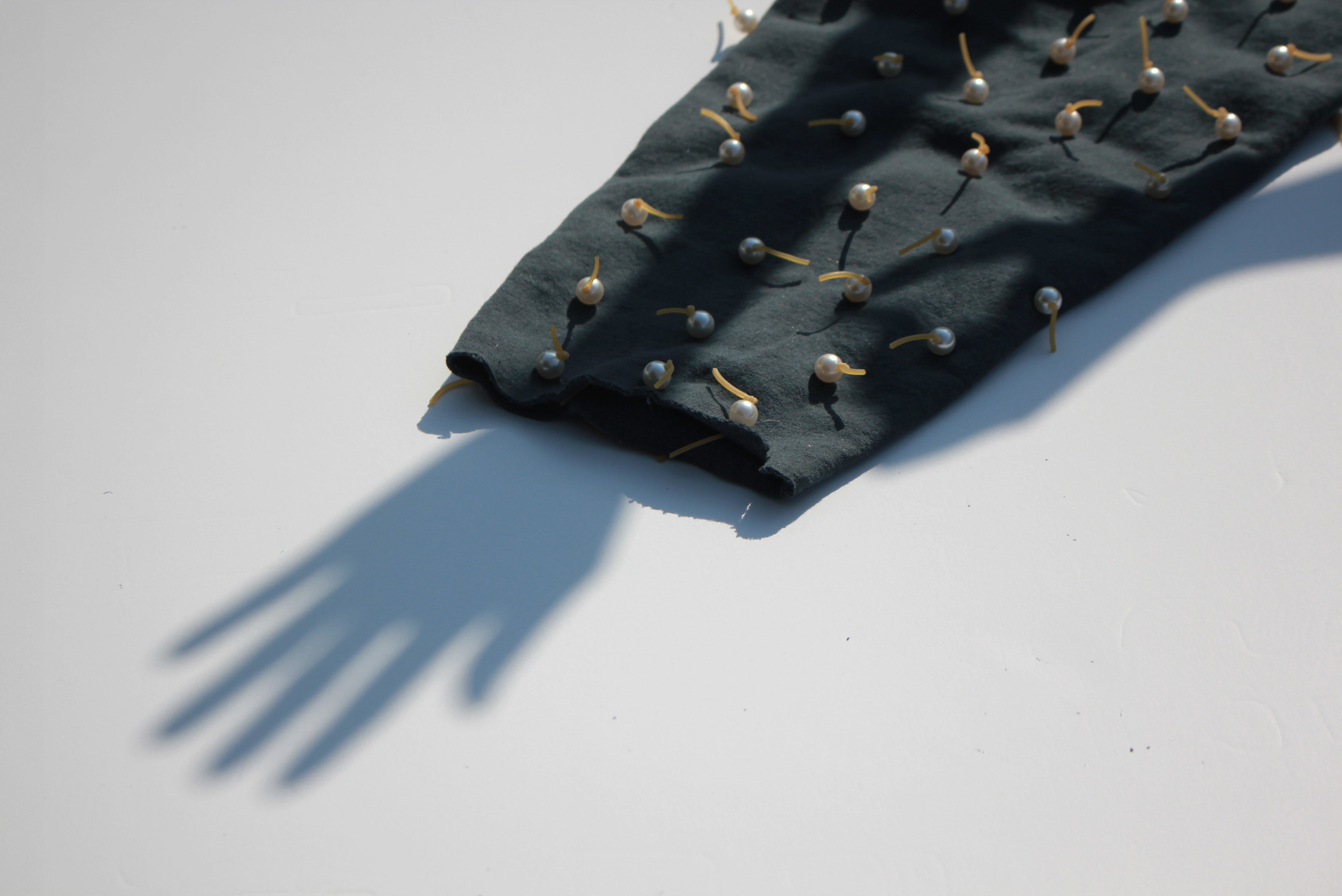
Tangible interactive materials:
To discover the breakthroughs, we iterated
the process from exploring behavioral triggers in context to verifying
them to form tangible interactive materials. Throughout this committed
journey for three months, we explored the intensity of tactile and auditory
experiences, identifying the most universal behavior patterns.
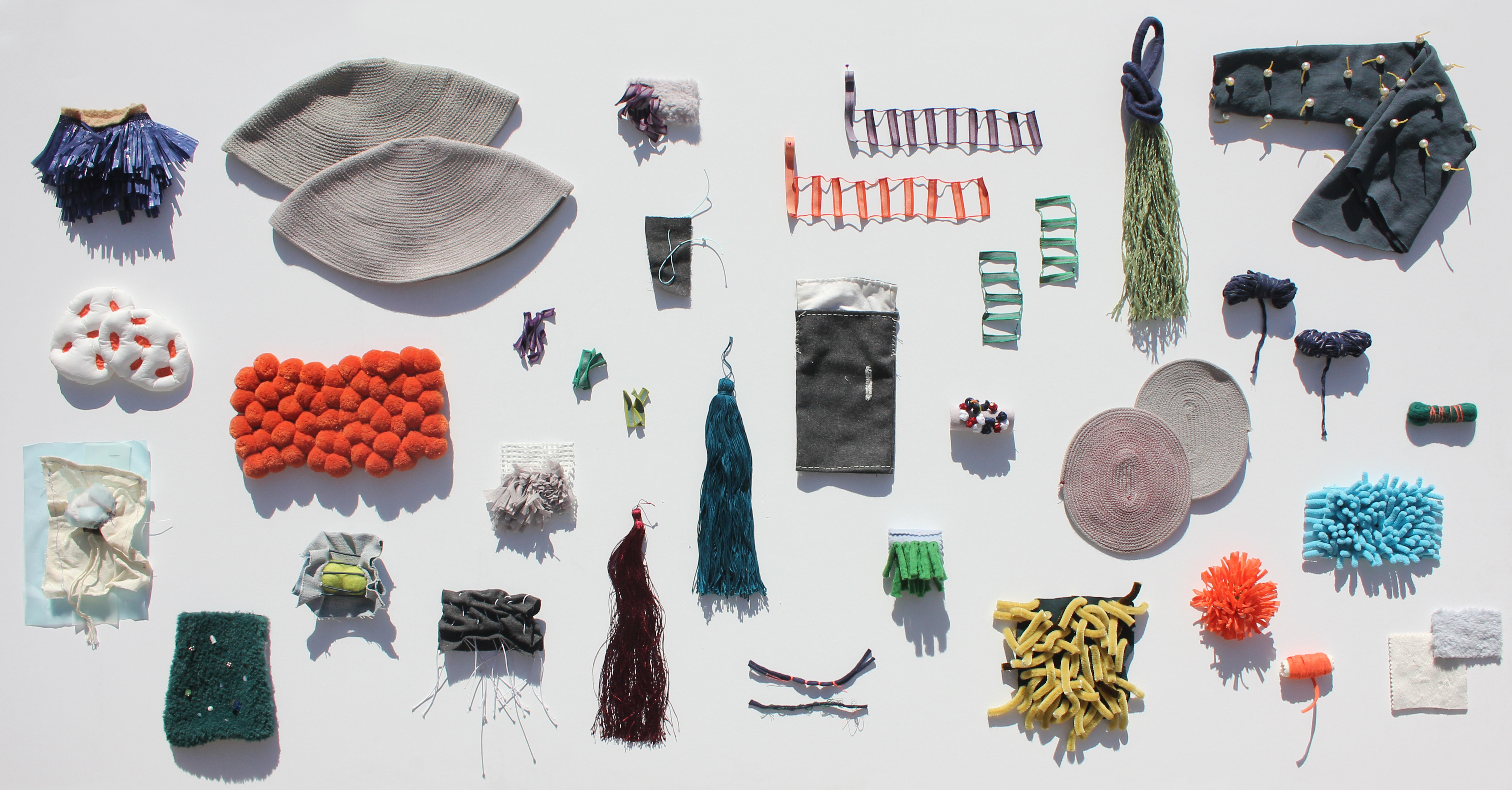
Behavioral archetypes:


Contemporary Gat
Stroking bumpy beard with whispering


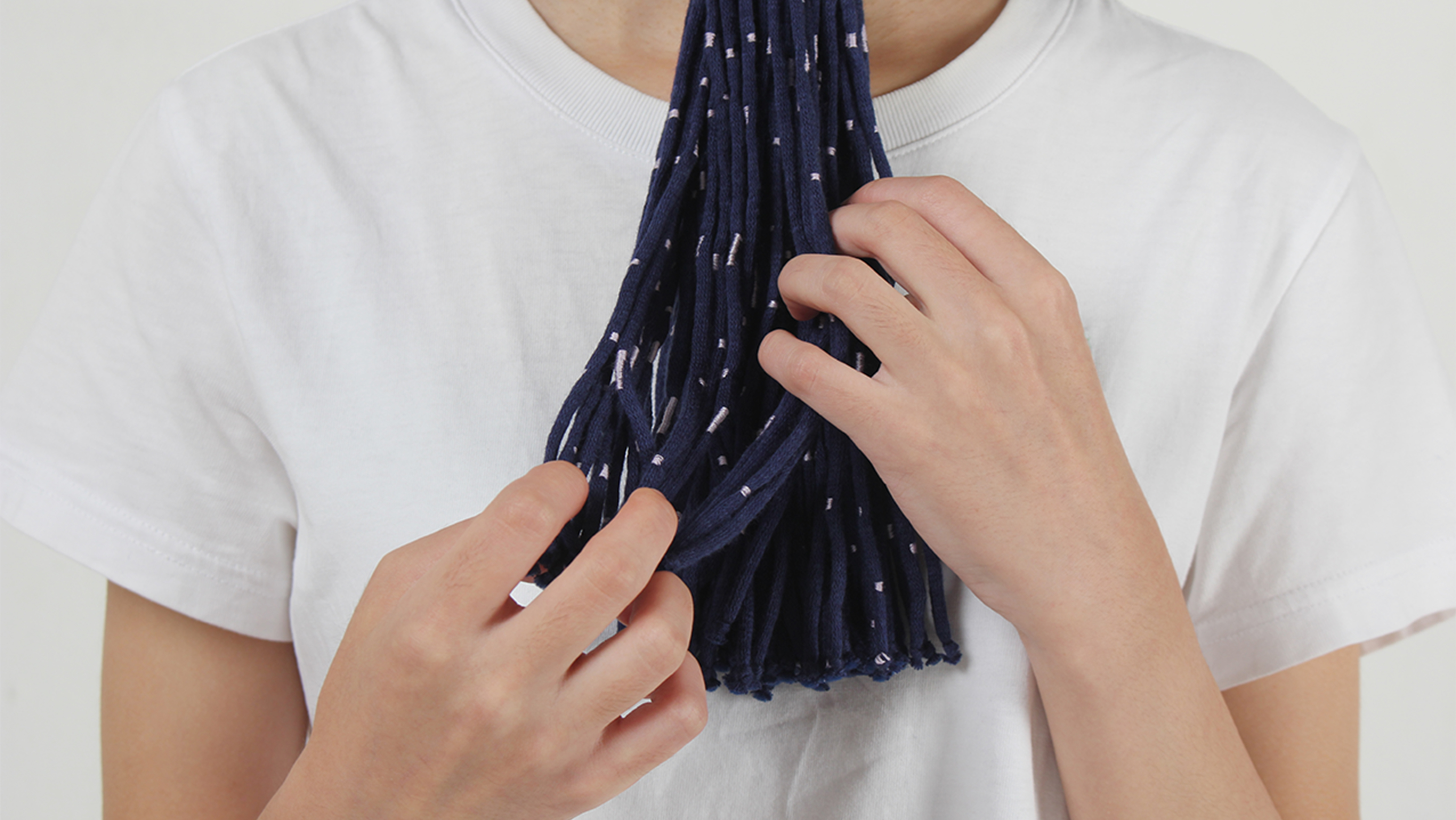
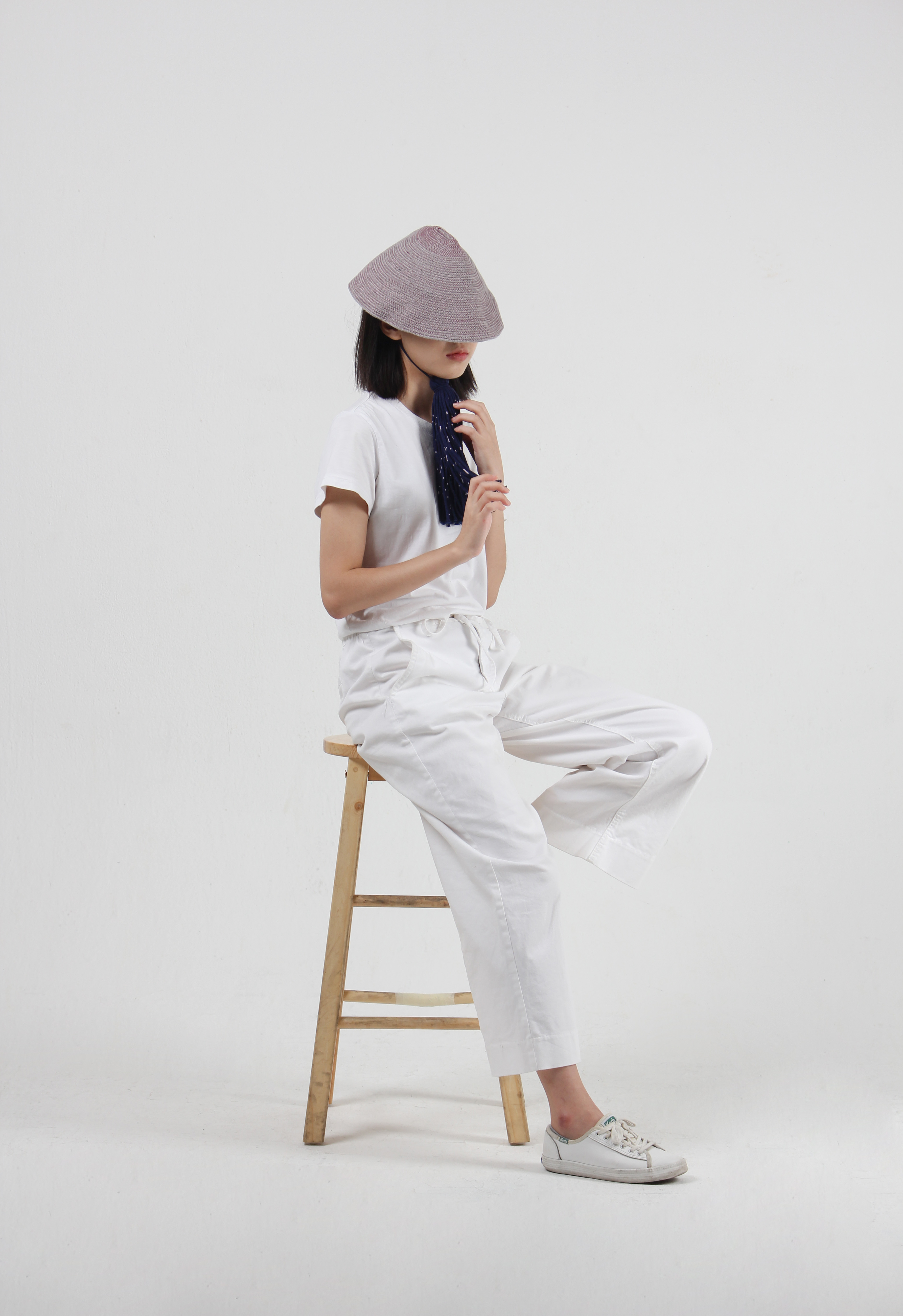
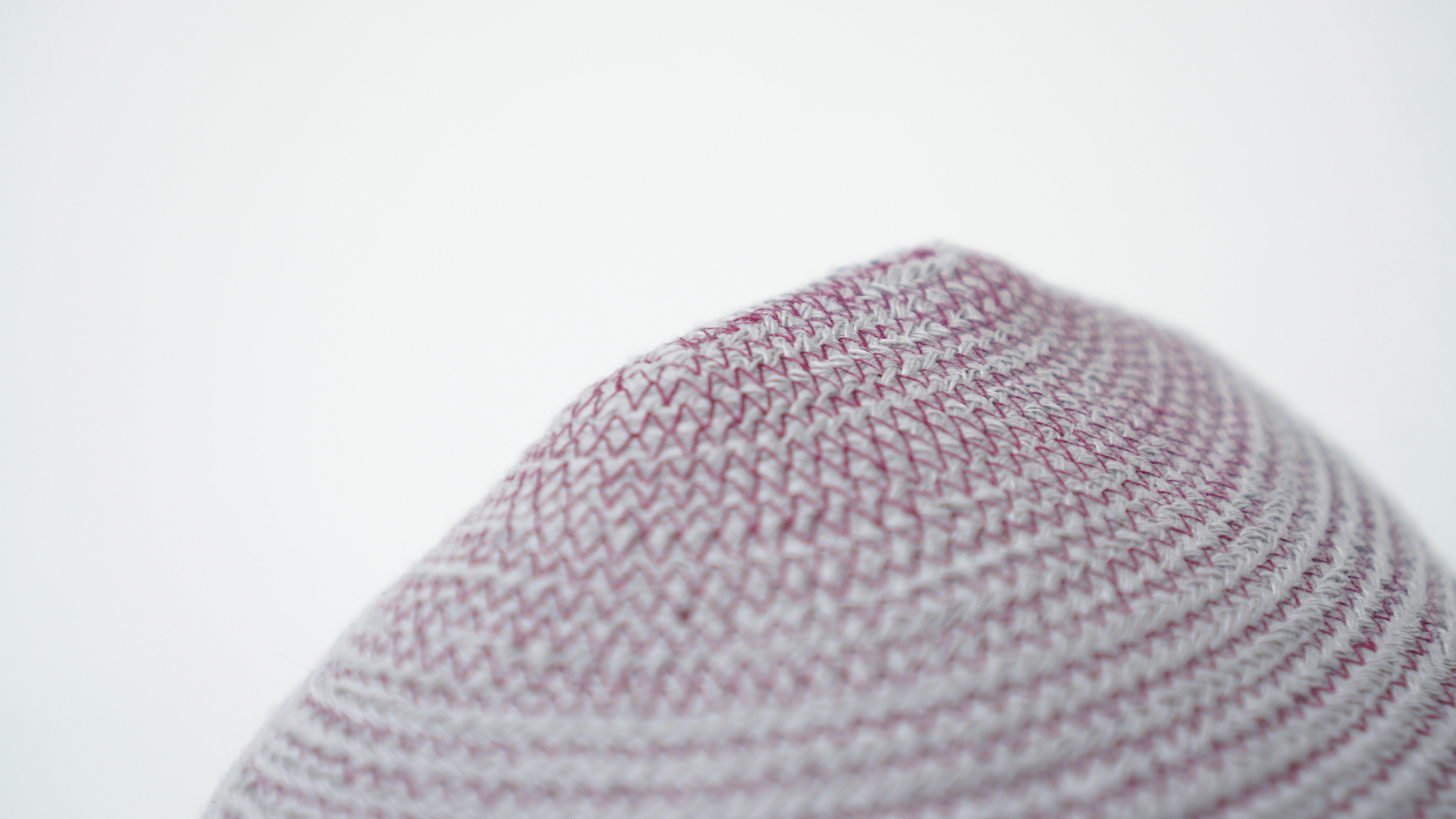
Muffler
Groping the rounded edge beads with crunching snow
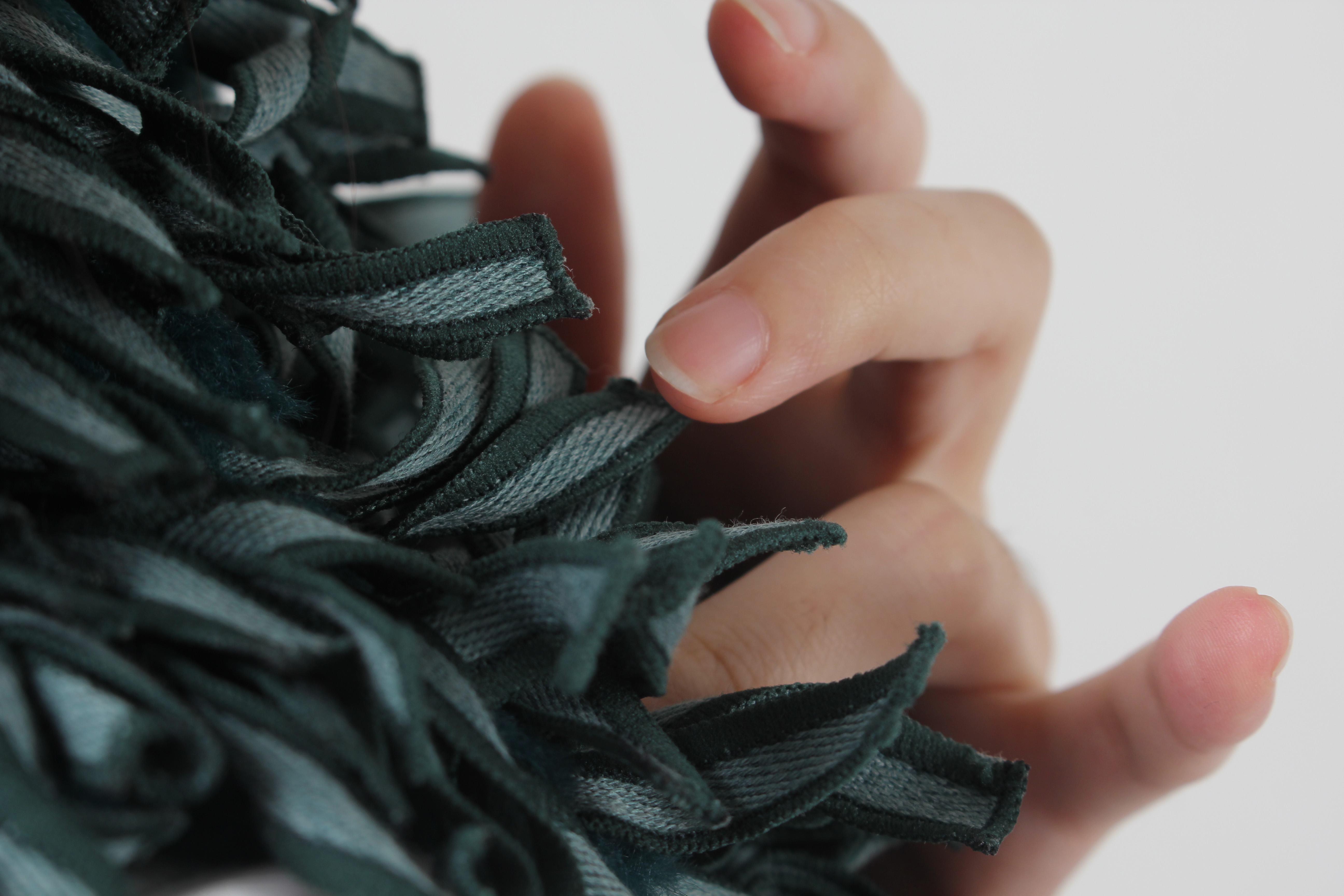
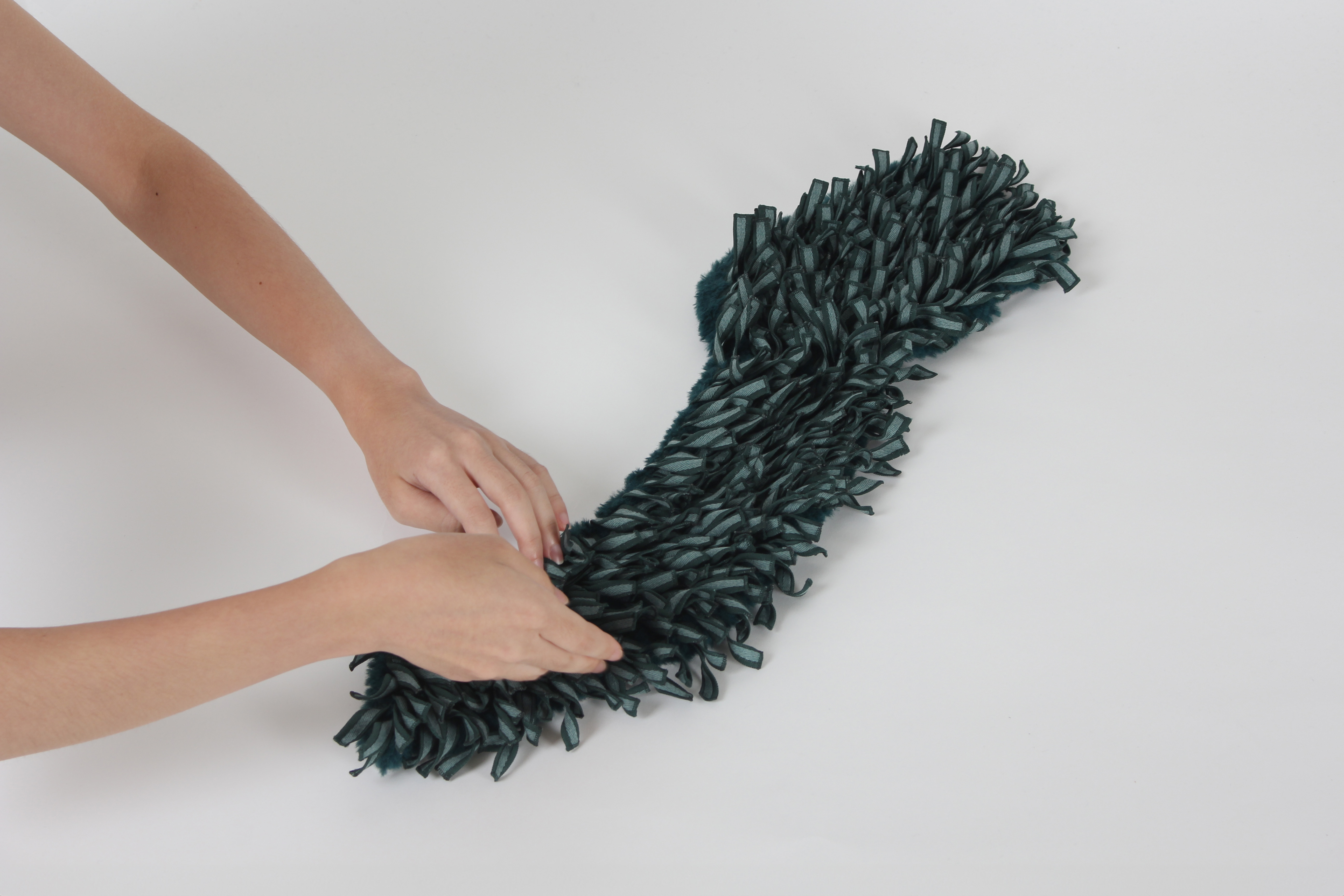
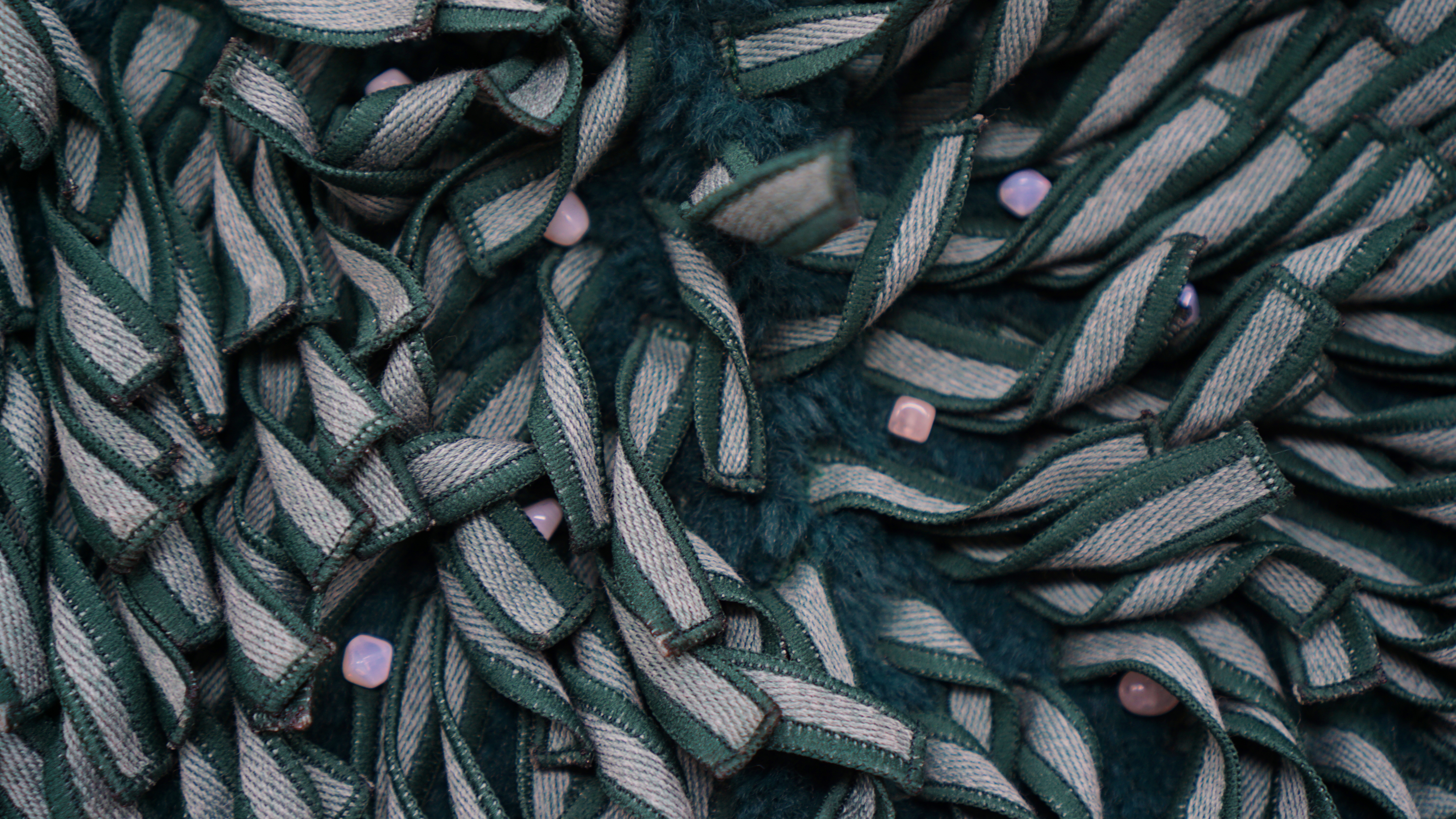


Arm warmer
Elastic strings play with rustling

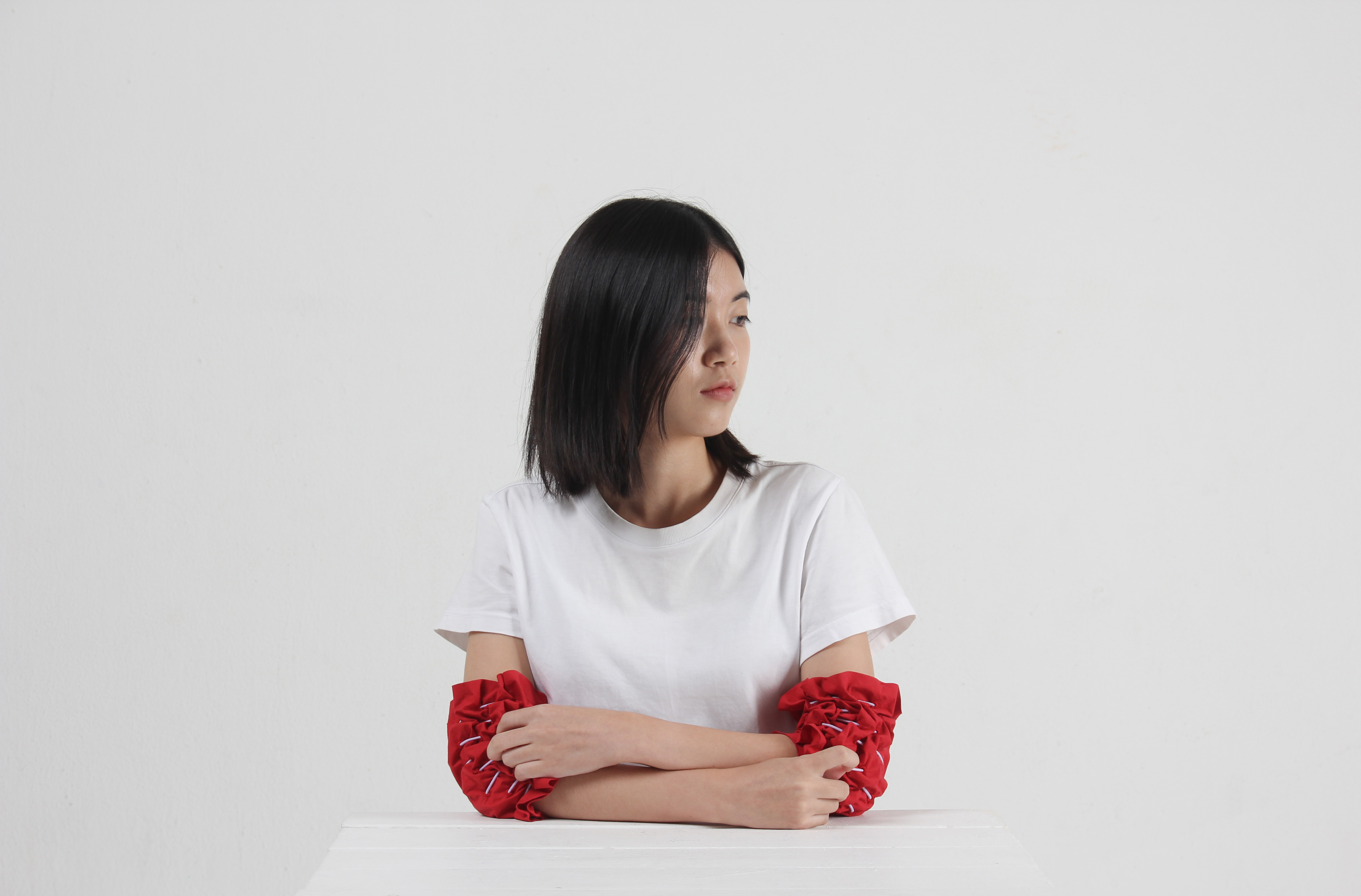




“ If you get into the habit of
consistently thinking and engaging in interactive behavior as part of your
daily life, wearable fidgets can become an integral part of your
routine. ”





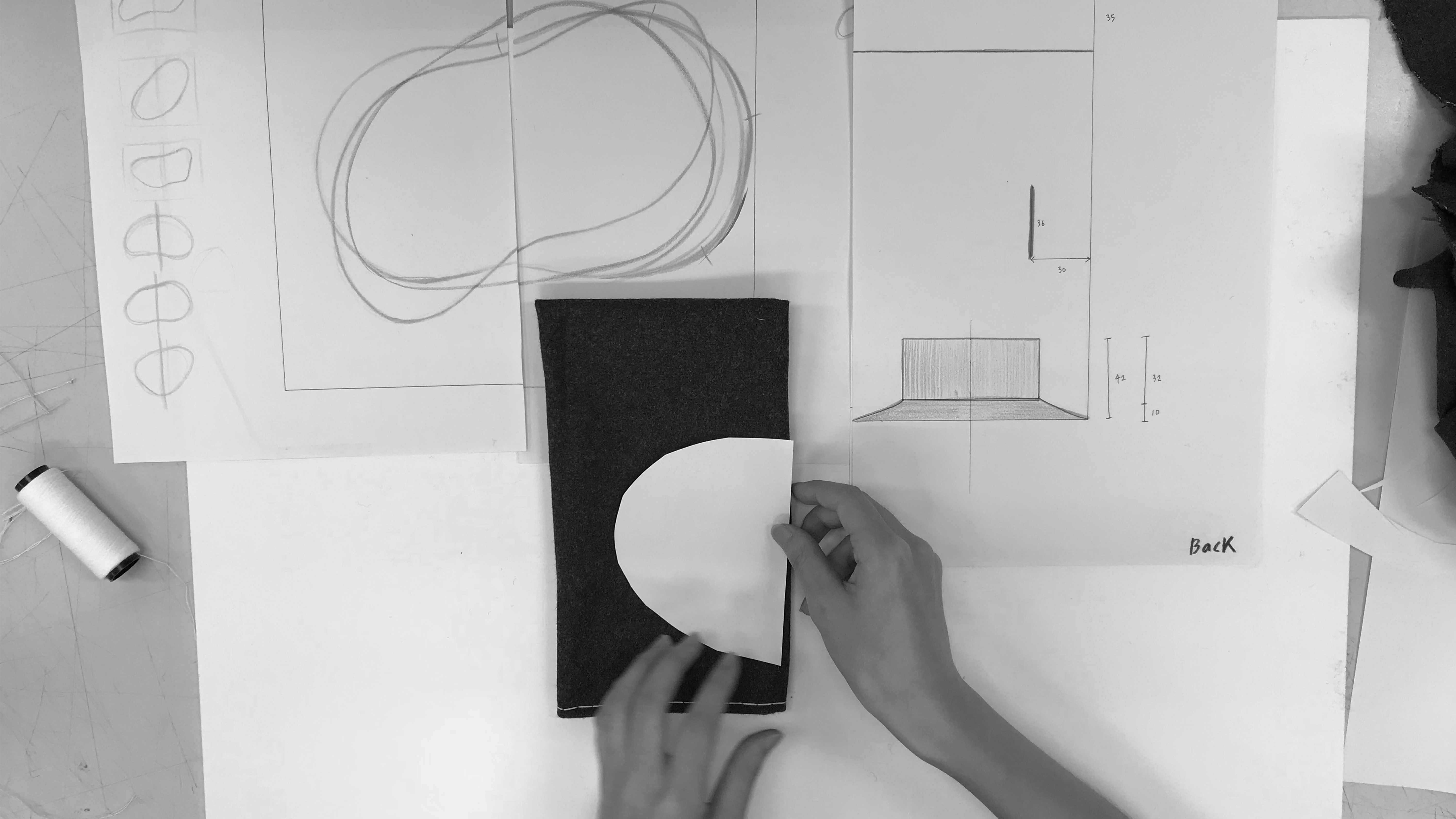



2018 Hongik University graduation exhibition:


